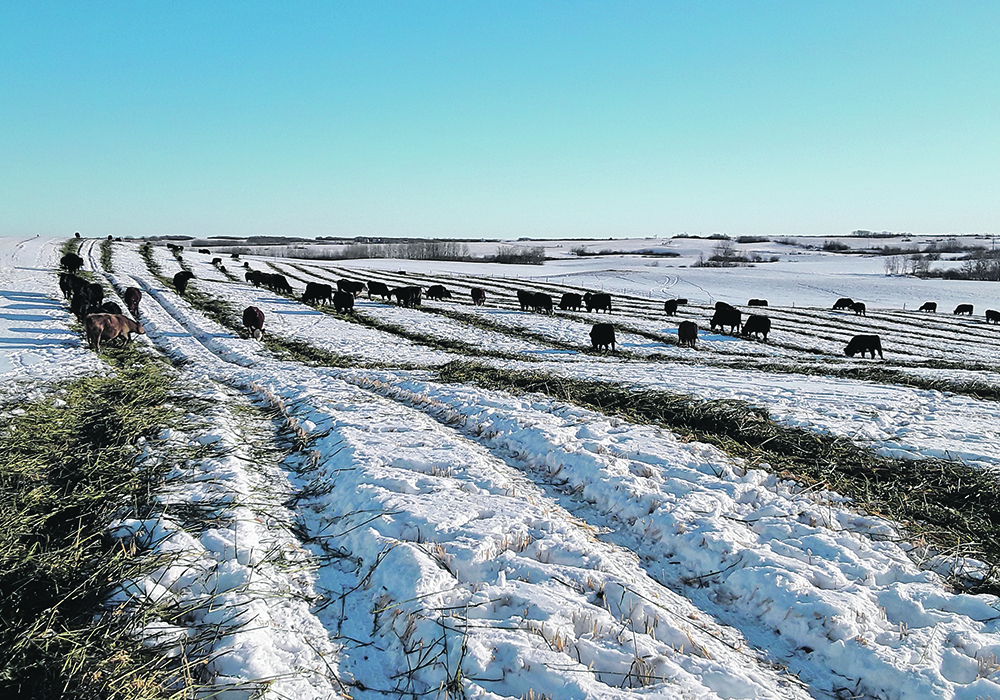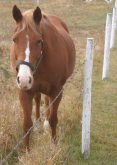A producer’s research determines that farmers can improve the ecosystem by increasing forage and grazing positively
Nuffield scholar Ryan Boyd says Western Canada is missing a huge opportunity by not incorporating more cattle into farming systems.
Boyd, who operates a mixed farm near Forrest, Man., said his observations from travel around the world last year show that livestock offer a “resilient long-term solution to agriculture profitability, productivity and climate change.”
Boyd went to the United States, Mexico, Brazil, Netherlands, New Zealand, Australia and the United Kingdom. The Nuffield Canada Scholarship is a rural leadership program available to people involved in agriculture.
Read Also

Beef check-off collection system aligns across the country
A single and aligned check-off collection system based on where producers live makes the system equal said Chad Ross, Saskatchewan Cattle Association chair.
“It was a really enlightening experience,” he said during a Farm Forum presentation.
His family operation was on the regenerative path, focusing on reducing inputs and working in concert with nature, he said.
But a few dry years challenged that. The travel allowed him to step back and look at possibilities, he said.
“I don’t think I learned anything that’s going to shatter the world, but it just reinforced some of the things that I’ve come to notice and see at home,” Boyd said.
By that he means the opportunity to have more cattle on the land.
He said increasing forage and grazing positively affects the ecosystem. He noticed that in Mexico, where flood irrigation is required in the desert, and Brazil, which receives metres of rainfall each year.
In Australia, he said, it was obvious where good grazing management was employed as the east coast region came out of a drought.
“It was good to see those extremes and see just how the subtleties of management can have a major effect,” Boyd said.
He said water is an easier concept to grasp than carbon.
“To get more water into the soil you need more carbon,” he said. “And how do we do that? We grow a diversity of plants.”
Water infiltration, and storing water on the farm instead of getting rid of it as fast as possible in the spring, is important, he said.
Boyd said his travels led him to think that he needs to spend more time and focus on marketing.
“We have about 400 cows that calve, and that many yearlings, and a bunch of bulls as well and we’re doing that on a couple thousand acres of perennial forage and about 1,000 acres of cash crop land,” he said.
“In our spot in that acreage the potential to improve on our bottom line with an extra emphasis on marketing is great indeed.”
The Boyds employ a strip-grazing system using poly-wire. The cattle are given a quarter-acre to half-acre at a time and are moved four to five times a day.
Automatic gate lifters programmed at the beginning of each day lift the wires and the cattle move under into the next paddock.
“It worked out we were grazing 600,000 to a million pounds of beef per acre,” he said.
Grazing that intensively means the cattle have a huge appetite and are chock-full of grass by the end of the day.
“We’re not compromising performance,” Boyd said. “We’re closely monitoring the manure. If we need to supplement with a protein supplement or some kind of rumen stimulant we will. We’re also very cognizant to have a good mineral program.”
He said the paddocks get a long rest after being grazed so hard. Trampling creates a litter layer that, along with the manure, return a thick, lush feed source.
With about 100 grazing days per acre on the initial pass, Boyd said the regrowth offers at least twice that much grazing.
He said there was more rain this year, which helped. But capitalizing on that rain by introducing grazers to stimulate the forage is important.
In the long term, the ecosystem is improved, there is more soil carbon and the wildlife habitat is better.
He said he is still trying to figure out the “sweet spot” because grazing at ultra-high density levels requires significant forage and long rest periods.
“It’s a learning curve but to me the way our seasonal precipitation comes, we’re wet in the spring and dry out in the late summer, I’m convinced that this is a more resilient type of a grazing program,” Boyd said.
He added producers need the type of cattle that can graze non-selectively. The Boyds breed their own bulls and for the last three years have used only yearling bulls on their cows.
He said the principles of keeping the ground covered, having plant diversity, continual living roots, integrating animals and reducing pesticides and inputs are working.
“Farmers large and small are thinking about how they can make this work for them,” he said. “Cattle are the key that unlocks that door. Yes, we have our winters to deal with, but there is a tonne of potential to add value to our farming systems.”


















